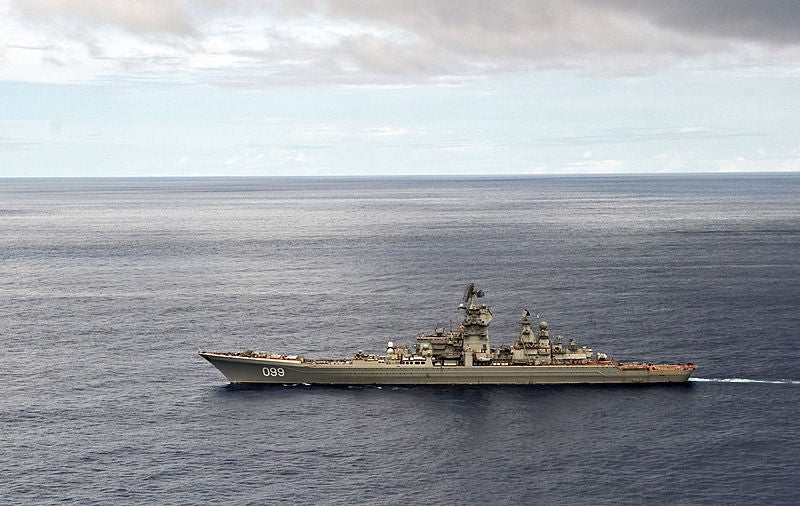
The Russian Navy’s fourth Kirov-class heavy nuclear-powered missile cruiser Pyotr Veliky has demonstrated its missile defence capabilities during a patrol-and-training mission in the Arctic.
A defence ministry source told Izvestia that Pyotr Veliky conducted missile defence drills on the Northern Sea route along Russia’s Arctic coast, as part of the sea-based segment of the country’s missile defence shield.
"The missile defence drills in the Arctic are very important because they cover the trajectories of potential strikes by land-based US ballistic missiles," the source added.
Originally named as Yuri Andropov, Pyotr Veliky is the flagship of Russia’s Northern Fleet and is the only frigate with the capability to provide defence against cruise and ballistic missile attacks.
The ship is equipped with weaponry that includes the 48 S-300F Fort and 46 S-300FM Fort-M (SA-N-20 Gargoyle) medium-range surface-to-air missiles with effective range of up to 200km, 128 3K95 Kinzhal (SA-N-9 Gauntlet) short-range SAMs, and six CADS-N-1 Kashtan gun/missile systems.
Kirov-class frigates can provide air and submarine attack capabilities, as well as the ability to strike large surface ships, while carrying three Kamov Ka-27PL or Ka-25RT helicopters.
With a displacement capacity of between 24,000t-26,000t, the 251m-long Russian warship can cruise at speeds up to 31k and accommodate a crew of more than 700.
The frigate features radars that can detect and track targets in the air at an altitude of 30km and a range of 300km.
Russia is aiming to modernise its three mothballed Kirov-class missile cruisers by 2020, under the sea-based segment of national missile defence network development programme.
Image: Russian Navy’s Pyotr Veliky nuclear-powered cruiser during its voyage. Photo: courtesy of RIA Novosti archive, image #669522 / Grigory Sysoev / CC-BY-SA 3.0.




